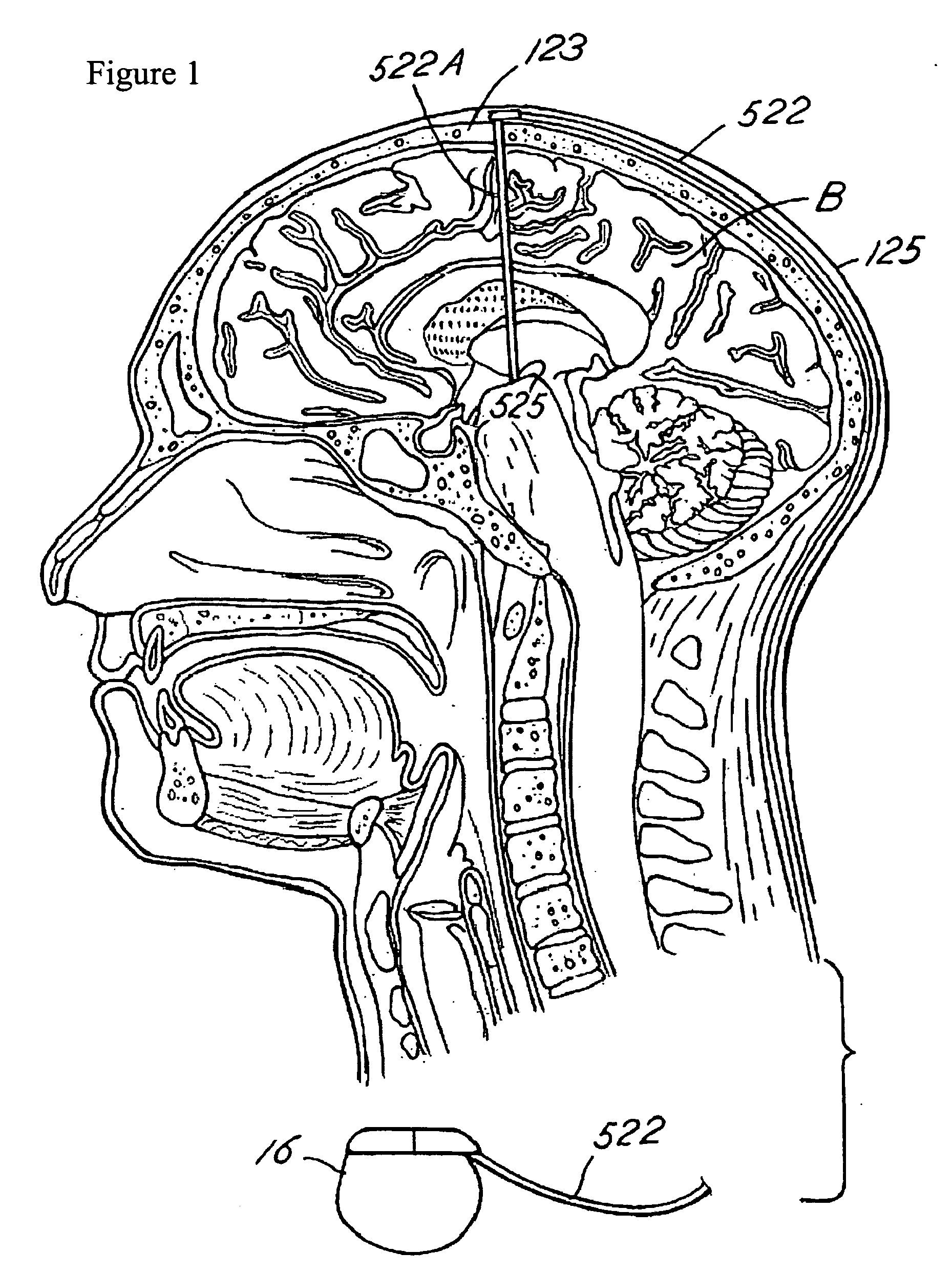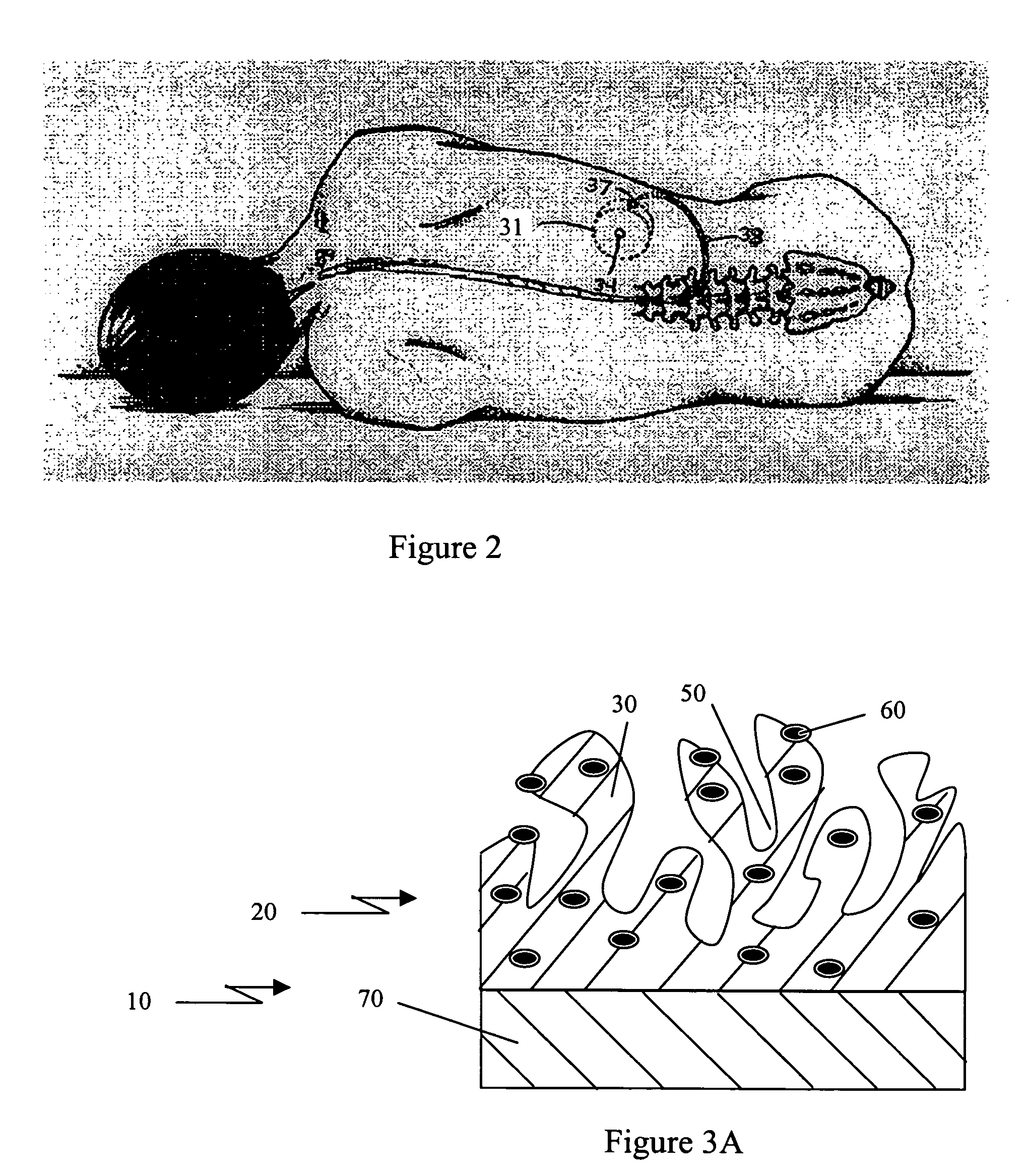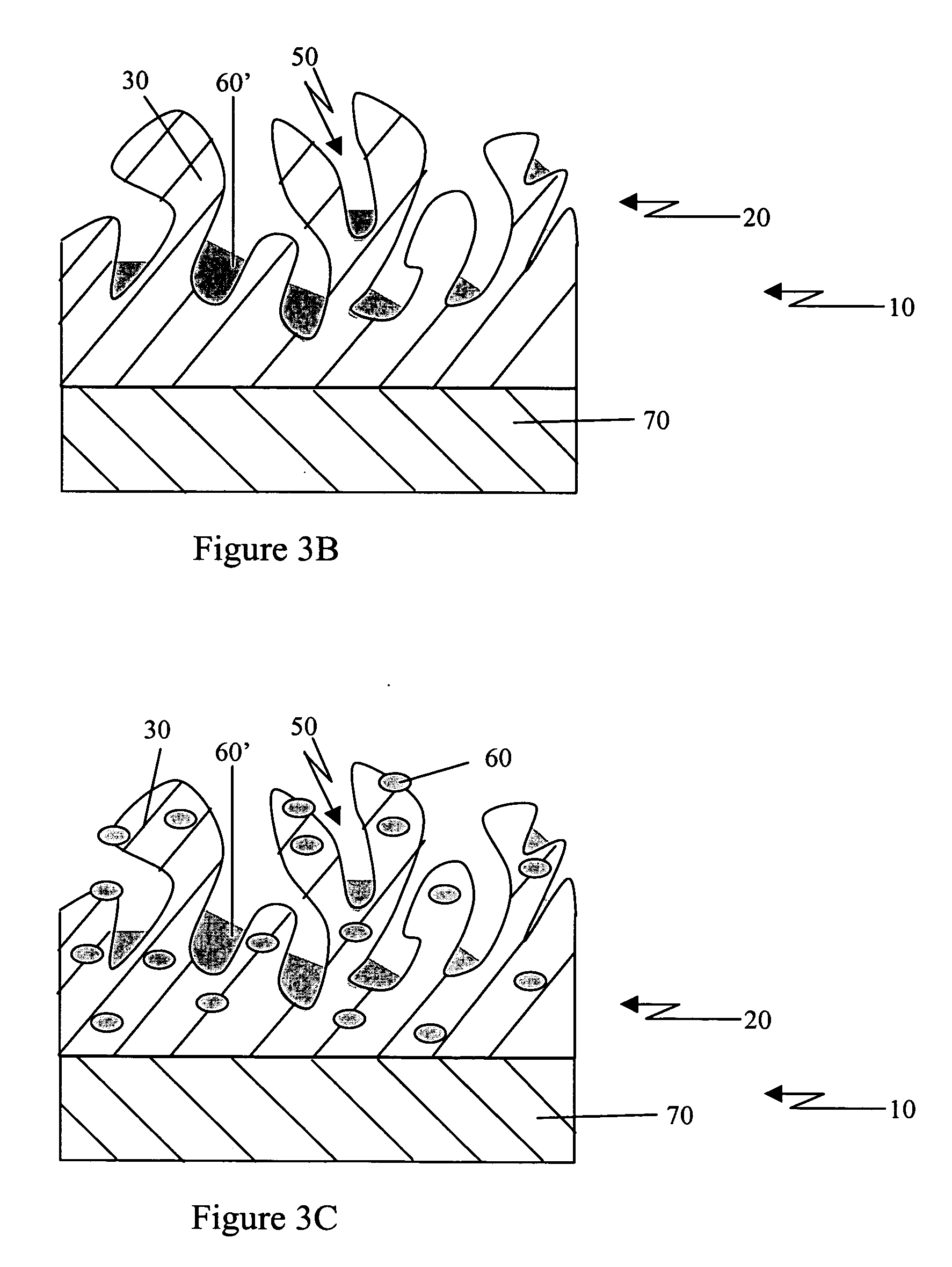Porous coatings for drug release from medical devices
- Summary
- Abstract
- Description
- Claims
- Application Information
AI Technical Summary
Benefits of technology
Problems solved by technology
Method used
Image
Examples
example 1
[0074] Porous polymer retains more drug and increases initial burst release of drug release relative to non-porous polymer
Methods
[0075] Silicone tubing from a Medtronic Model 8831 catheter, having nominal dimensions of 0.050″ OD and 0.021″ ID, was cut into approximately 1 inch pieces. After cleaning in tetrahydrofuran (THF), tubing was dip coated with two solutions containing 15 g of either RTV 1137 or RTV 2000 (NuSil Technology, Carpinteria, Calif.) together with sodium bicarbonate salt (15 g) and THF solvent (45 g). After proper drying and curing, tubing was placed in deionized water to extract the sodium bicarbonate salt.
[0076] Lumens of original (non-porous) and porous samples were filled with RTV-1137 and cured to prevent drug loading into tubing lumens. Samples with blocked lumens were placed in 1% of dexamethasone acetate solution in acetone for 30 seconds followed by drying overnight at 37° C. Drug loaded samples were placed in 5 ml of PBS buffer and incubated under stir...
PUM
| Property | Measurement | Unit |
|---|---|---|
| Size | aaaaa | aaaaa |
| Size | aaaaa | aaaaa |
| Metallic bond | aaaaa | aaaaa |
Abstract
Description
Claims
Application Information
 Login to View More
Login to View More - R&D
- Intellectual Property
- Life Sciences
- Materials
- Tech Scout
- Unparalleled Data Quality
- Higher Quality Content
- 60% Fewer Hallucinations
Browse by: Latest US Patents, China's latest patents, Technical Efficacy Thesaurus, Application Domain, Technology Topic, Popular Technical Reports.
© 2025 PatSnap. All rights reserved.Legal|Privacy policy|Modern Slavery Act Transparency Statement|Sitemap|About US| Contact US: help@patsnap.com



